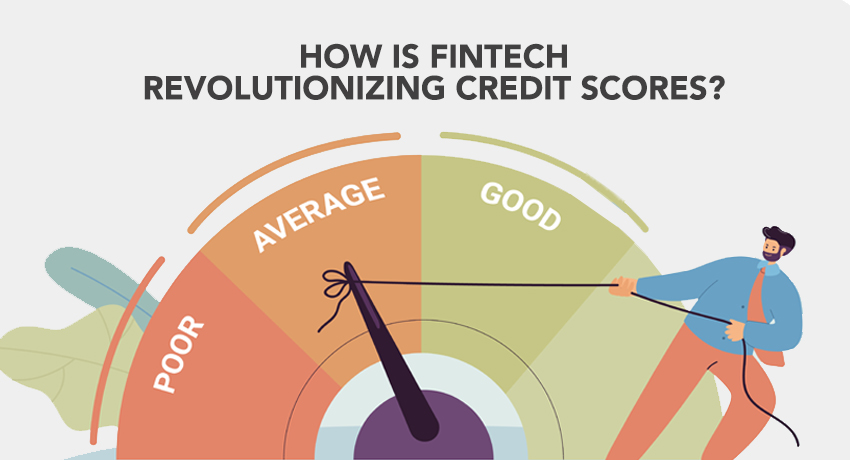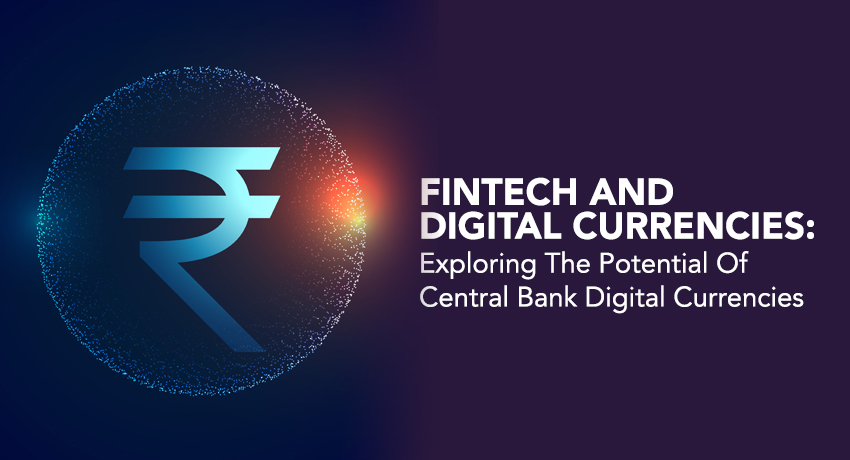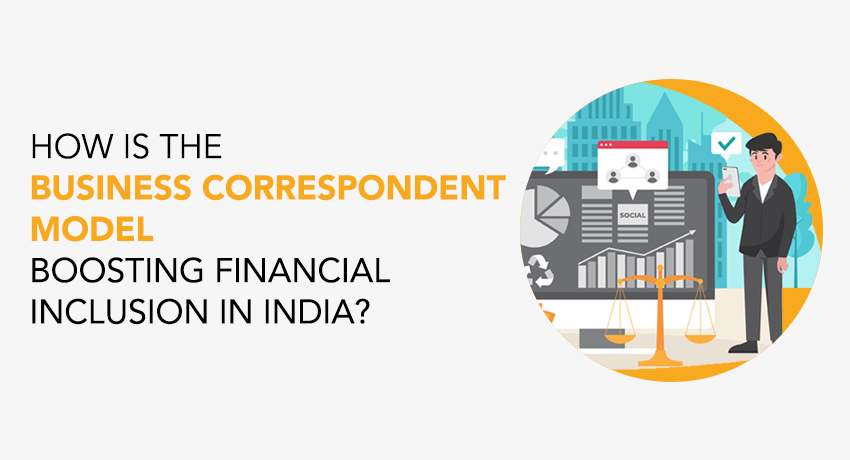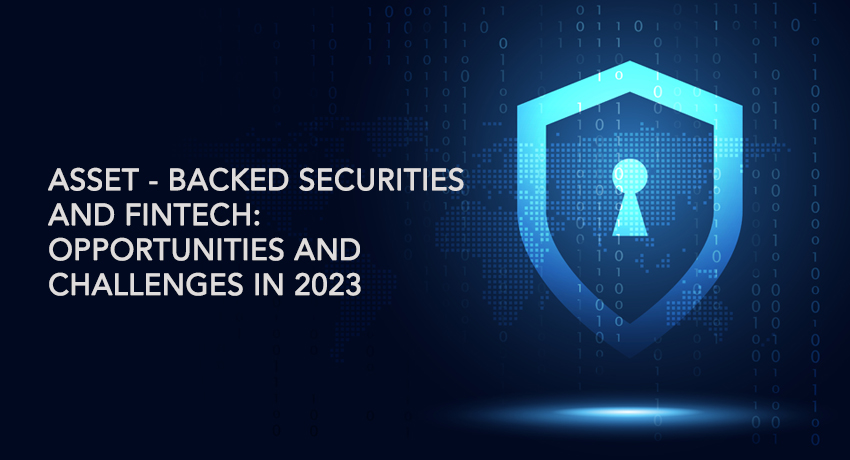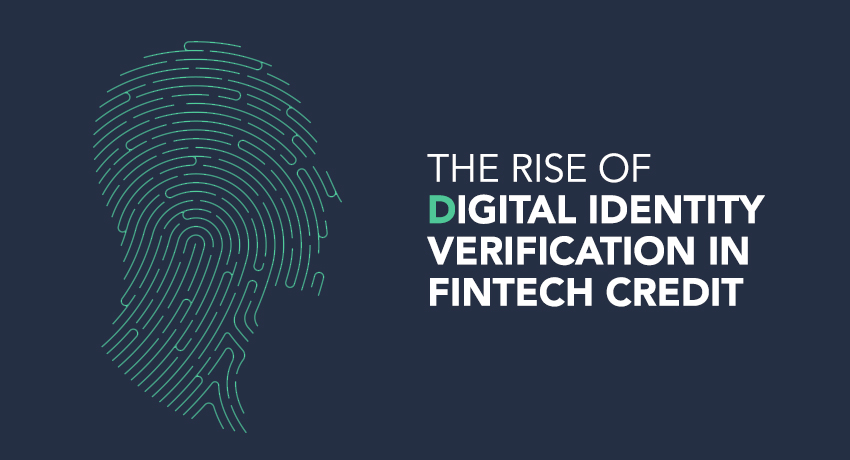The fintech revolution has impacted the financial industry in a variety of ways, with credit scoring being one of the most disruptive. Credit scores have traditionally been established using restricted data, frequently omitting people with little or no credit history. However, with the rise of fintech, forward-thinking businesses are using technology, alternative data sources, and advanced analytics to revolutionize credit ratings. Image Source: Google Fintech changing credit scores and its benefits to consumers and lenders Increasing Data Sources Fintech firms are leveraging the power of technology to access data sources other than traditional credit agencies. Fintech firms may provide a more comprehensive image of an individual’s creditworthiness by examining a broader range of data, such as utility bills, rent payments, and even social media activity. As a result, they can now measure creditworthiness for people who were previously underserved by the standard credit scoring paradigm. Inclusion of unbanked and underbanked individuals One of the primary benefits of fintech-driven credit scoring is its capacity to include people who are unbanked or underbanked. These people may have limited access to standard financial services and no official credit history. Fintech firms can use alternative data and creative scoring models to assess creditworthiness based on criteria such as income, savings patterns, and transaction history. This inclusion gives underprivileged people access to credit and financial services that were previously unavailable to them. Improved Accuracy and Risk Assessment Fintech’s data-driven approach to credit scoring improves risk assessment accuracy. Traditional credit ratings frequently focus mainly on payment history, ignoring important aspects like income, education, and employment history. These extra data points can be incorporated into fintech models to create a more comprehensive assessment of an individual’s creditworthiness. This enables lenders to make better-informed decisions and provide personalized lending packages customized to the specific demands and circumstances of each borrower. Speed and Efficiency Fintech firms use innovative technologies and automation to streamline the credit evaluation process. They can analyze vast amounts of data quickly and deliver near-instant credit judgements by utilizing algorithms and machine learning. This speed and efficiency benefit both lenders and borrowers by lowering the time and effort required to acquire credit while reducing the danger of human error. Facilitating Financial Inclusion The significance of fintech-driven credit scoring in fostering financial inclusion is one of its most important achievements. Fintech companies are breaking down barriers and boosting access to finance for previously underrepresented populations by leveraging alternative data sources and advanced analytics. Individuals will be able to establish credit, get inexpensive loans, and engage more fully in the economy as a result of this inclusion, leading to increased financial empowerment and economic prosperity. Fintech is transforming credit ratings through the use of technology, alternative data sources, and advanced analytics. This game-changing strategy broadens the pool of people who can obtain credit, empowers the unbanked and underbanked, and improves the accuracy and efficiency of credit evaluation. Financial inclusion is being promoted through fintech-based credit scoring, which ensures that more people have access to affordable loans and financial services. The credit scoring landscape will continue to alter as the fintech revolution proceeds, empowering individuals and transforming the way creditworthiness is assessed.
Month: July 2023
Fintech and Digital Currencies: Exploring the Potential of Central Bank Digital Currencies
The emergence of financial technology (fintech) in recent years has transformed the way we conduct financial transactions. The rise of digital currencies is one of the most significant developments in the fintech industry. While cryptocurrencies such as Bitcoin have gained popularity, central banks around the world are investigating the possibilities of central bank digital currencies (CBDCs). So, here we explore the potential of CDBCs. Financial Inclusion and Banking Service Access CBDCs have the ability to address the difficulties of financial inclusion by offering universal access to basic financial services. Individuals who do not have traditional bank accounts can use CBDCs to get a digital wallet that is directly linked to the central bank, allowing them to engage in the digital economy and access important financial services. This empowers unbanked and underbanked people while also encouraging economic growth and decreasing disparities. Efficiency and Cost-cutting CBDCs can streamline financial transactions by minimizing middlemen and associated expenses by harnessing the benefits of block chain technology. Real-time settlement and instant peer-to-peer transactions are conceivable, removing the need for third-party payment processors and lowering transaction fees. This increased efficiency can benefit firms, consumers, and governments alike, boosting economic growth and decreasing friction in the financial system. Financial Stability and Regulation CBDCs strengthen central banks’ visibility and control over financial transactions. The use of block chain technology allows for increased monitoring capabilities, which aid in the discovery of illegal acts such as money laundering and fraud. Furthermore, CBDCs can serve as an additional policy tool for managing monetary policy, thereby enhancing financial stability and resilience. Transactions and Remittances Across Borders CBDCs have the potential to make cross-border transactions more efficient, transparent, and cost-effective. CBDCs can efficiently facilitate remittances, which are critical for many developing economies, by decreasing fees and delays associated with traditional money transfer systems. This has the potential to boost economic growth and enhance the livelihoods of individuals and families who rely on remittances. Innovation and the Fintech Ecosystem CBDCs can promote innovation in the fintech environment. CBDCs enable the development of smart contracts and decentralized apps (DApps) by offering a programmable infrastructure, thereby opening up new possibilities for automated financial services and novel financial solutions. This fosters technical developments and a thriving fintech sector. Key Principles of CDBCs Indian Digital Currency Program The Reserve Bank of India (RBI) launched a digital rupee pilot programme in the wholesale sector, on November 1, 2022. Our Indian Digital Currency (IDC) would be used as a cryptocurrency in our country. This digital money would give our country’s economy a boost and help it grow. What is the RBI’s take on CBDC? A redesigned and computerized form of physical currency, similar to sovereign paper currency. Exchangeable at par with present currency and acknowledged as a medium of payment. A lawful tender and a safe deposit of value. Conclusion Central Bank digital currencies have the potential to transform the financial landscape, providing several benefits ranging from financial inclusion and efficiency to improved regulatory supervision. However, CBDC deployment necessitates careful consideration of a number of aspects, including privacy problems, cybersecurity, scalability, and interoperability with existing financial systems. Collaboration between policymakers, financial institutions, and technological specialists is critical as central banks throughout the world continue to explore and trial CBDC projects. To exploit the revolutionary potential of CBDCs while resolving issues and ensuring that digital currencies contribute to a more egalitarian, efficient, and sustainable financial future, an inclusive and transparent strategy is required.
How is the Business Correspondent model boosting financial inclusion in India?
The availability and use of inexpensive financial services by all segments of society is a major driver of economic growth and poverty alleviation. In a varied and large country like India, achieving comprehensive financial inclusion has unique problems. However, the Business Correspondent (BC) model has emerged as a revolutionary force, bridging the gap between traditional banking services and the underprivileged population by leveraging technology and creativity. Let us view how the Business Correspondent concept is helping to increase financial inclusion in India. Understanding the Business Correspondent Model The Business Correspondent model is a framework that enables banks to extend their reach and supply financial services to rural and unbanked areas through intermediaries known as Business Correspondents. These correspondents function as bank representatives and conduct various financial transactions on behalf of the bank, bringing official financial services closer to the doorsteps of those who previously had restricted access. Key Benefits of the Business Correspondent Model Improved Accessibility: The Business Correspondent approach makes use of the existing network of local agents, such as Kirana store owners, post offices, and self-help groups, to operate as Business Correspondents. These agents are integrated into the areas they serve, increasing access to financial services for rural and underserved people. Technology-Led Approach: The BC model’s emphasis on harnessing technology to deliver financial services efficiently is one of its pillars. BCs allow secure and convenient banking services in places with limited physical infrastructure by using biometric identification, mobile banking, and smart card-based transactions. Financial Education and Awareness: Business correspondents play an important role in increasing financial literacy among the unbanked. They help individuals understand the necessity of formal financial services and empower them to make informed financial decisions by guiding them through the benefits of savings, credit, and insurance products. Credit Access for the Unbanked: The BC model makes it easier to extend loans to individuals and small enterprises that were previously excluded from mainstream banking systems. Business Correspondents help financial institutions give microloans and credit facilities to the underserved by completing detailed evaluations and using digital records, thereby boosting entrepreneurship and economic progress. Government Programs and Subsidies: The BC model has proven useful in executing numerous government initiatives and ensuring the proper distribution of subsidies and benefits. Business Correspondents serve as a critical link between beneficiaries and government organizations, enabling frictionless transactions and decreasing leakages in welfare programs. Challenges and Prospects: While the Business Correspondent approach has helped increase financial access, several issues remain. Infrastructure limits, connectivity issues, and regulatory barriers must be cleared in order to fully exploit the model’s potential. To overcome these challenges, it is critical to strengthen digital infrastructure, extend internet connectivity, and streamline regulatory frameworks. Furthermore, regular training and capacity-building programs should be established to improve the abilities of Business Correspondents so that they can efficiently provide comprehensive financial services. Financial institutions, technology providers, and legislators must work together to establish an ecosystem that promotes financial inclusion. Conclusion The Business Correspondent model has emerged as a game changer in India’s quest for financial inclusion. The BC approach provides cheap banking services to historically marginalized populations by using technology, empowering local agents, and increasing financial literacy. As India continues to make strides in bridging the financial divide, the Business Correspondent model stands as a beacon of hope, paving the way for a more inclusive and prosperous future.
Challenges Faced by Fintech Companies Adopting AI
Artificial intelligence has emerged as a game changer in the fintech business, with enormous potential to transform operations, improve client experiences, and drive innovation. However, despite its promised benefits, fintech organizations confront a number of hurdles in properly implementing AI. Data Quality and Availability One of the key issues that fintechs encounter when using AI is data availability and quality. To train efficiently, AI models require massive amounts of accurate, relevant, and diverse data. Fintech startups, on the other hand, frequently deal with data fragmentation, outdated systems, and data silos. Furthermore, obtaining high-quality data from reliable sources can be expensive and time-consuming. Regulatory Compliance Fintech firms operate in a highly regulated environment and must adhere to severe regulatory requirements. The adoption of AI brings new challenges because AI models frequently operate as black boxes, making it difficult to explain the judgments they make. Transparency, justice, and accountability are all required by regulatory agencies in AI systems, generating issues about regulatory compliance. Talent Acquisition and Skill Gap AI implementation necessitates a skilled workforce capable of designing, deploying, and managing AI systems. However, due to tough competition and high demand, fintech organizations frequently experience issues in hiring and maintaining elite AI expertise. Furthermore, there may be a considerable talent gap among existing teams, restricting their ability to properly embrace and exploit AI technologies. Ethical and Bias Concerns AI systems are only as good as the data they are trained on. Biases in training data can lead to biased results, raising ethical concerns and the possibility of discrimination. Fintech firms must solve these concerns in order to provide fair and unbiased AI applications. Solutions: Companies in the financial technology sector must invest in data infrastructure and governance. They must establish strong data management practices, ensure data cleanliness, and devise strategies for integrating and consolidating data from several sources. Collaborations with data providers and the use of third-party data sources can also aid in overcoming data availability issues. Fintech companies should take a proactive approach to regulatory compliance by collaborating closely with regulators to identify and address their issues. They should create explainable AI models and guarantee transparency in decision-making processes. Collaborating with RegTech firms can provide essential tools and solutions for effectively navigating the regulatory landscape. Fintech companies might invest in upskilling their existing personnel through training programs and partnerships with educational institutions. Collaboration with AI start-ups and research organizations, as well as using consulting services, can help overcome the talent gap. Building a diversified team with experience in data science, machine learning, and domain knowledge is critical for effective AI adoption. Fintech firms should put comprehensive systems in place to identify and eliminate bias in AI models. They should undertake regular audits and testing to determine the fairness and ethical implications of their AI systems. Implementing diverse and inclusive data collection practices and involving multidisciplinary teams in AI development might help handle bias concerns successfully. Despite the hurdles, the deployment of AI provides enormous opportunities for fintech companies to revolutionize the financial system. Fintech start-ups can overcome these obstacles by tackling concerns such as data quality, regulatory compliance, talent acquisition, and ethical considerations. Strategic investments in data infrastructure, coordination with regulators, workforce upskilling, and implementing ethical AI practices will be critical to successfully embracing AI and realizing its full potential in the fintech sector.
Asset-Backed Securities and Fintech: Opportunities and Challenges in 2023
Asset-backed securities (ABS) have long been a popular financial vehicle for securitizing and diversifying the risks associated with diverse underlying assets. The rise of fintech has introduced new opportunities and challenges to the ABS market in recent years. Fintech firms are transforming the way ABS are originated, structured, and traded by exploiting innovative technologies and alternative data sources. Opportunities Access to Diversified Asset Classes Fintech platforms are enabling the securitization of assets other than typical mortgages and auto loans. Peer-to-peer loans, small business loans, supply chain finance, and even revenue streams from subscription services can now be securitized using fintech-driven ABS. This expansion provides investors with new investment choices and helps issuers diversify their funding sources. Greater Efficiency and Transparency Fintech solutions are improving the ABS origination and structuring process, increasing efficiency, and lowering costs. Blockchain technology, for example, offers safe and transparent asset ownership documentation, allowing for faster settlements and lowering counterparty risks. Smart contracts automate payment flows and enforce pre-set rules, ensuring accuracy and removing the need for middlemen. These technical advances result in improved operational efficiency and transparency throughout the ABS’s lifespan. Improved Risk Assessment and Pricing Fintech platforms use advanced data analytics and artificial intelligence to improve risk assessment and pricing models for ABS. Fintech companies may produce more accurate and dynamic risk assessments for underlying assets by analyzing massive volumes of data, including alternative data sources. This better risk assessment enables more exact pricing of ABS, which benefits both investors and issuers. Challenges Regulatory Compliance: Fintech-driven ABS raises new regulatory issues. Compliance with existing securities regulations, investor protection requirements, and privacy legislation remain important factors for fintech firms. Regulators are adapting to the changing landscape, but firms in the fintech sector may be required to demonstrate adequate risk management frameworks, data protection measures, and compliance with Know Your Customer (KYC) and Anti-Money Laundering (AML) standards. Cybersecurity and data security threats: Data security and cybersecurity threats grow increasingly obvious as fintech platforms collect and analyze massive volumes of sensitive data for ABS origination and administration. It is critical to maintain data privacy and protect against cyber dangers. Fintech companies must invest in robust security measures, conduct frequent security audits, and follow industry best practices to prevent these risks. Investor Education and Trust: The incorporation of fintech into ABS necessitates educating investors on the new structures and technology involved. Building trust in fintech-driven ABS requires transparency in data sources, risk assessment processes, and underlying technology. Providing clear and accessible disclosures regarding ABS’s assets, risks, and potential returns will be critical for investor confidence. Fintech’s inclusion in the asset-backed securities market brings both opportunities and concerns in 2023. Fintech platforms increase access to a broader range of assets, improve efficiency and transparency, and improve risk assessment and pricing methods. However, regulatory compliance, data security, and investor education are critical problems that must be solved to ensure the long-term sustainability of fintech-driven ABS. As the fintech industry evolves, collaboration among regulators, fintech businesses, and market participants will be critical to realizing the full potential of fintech in the asset-backed securities market.
The Rise of Digital Identity Verification in Fintech Credit
Digital identity verification has evolved as an important component of credit evaluation processes in the fast-paced world of financial technology (fintech). Traditional methods of verifying identities for credit applications, such as manual document checks and in-person verification, are time-consuming, error-prone, and out of step with today’s customer expectations. Fintech firms are utilizing cutting-edge technologies and digital solutions to revolutionize identity verification, thereby improving security, efficiency, and customer experience. What is Digital Identity Verification? A digital identification service is a process that allows consumers to securely access their financial and legal information. We can easily communicate and protect our personal and sensitive information by using identity verification services. Advantages of Digital ID in Fintech and Online Banking Exceptional Customer Service Customers benefit from a seamless experience since digital identification verification simplifies and streamlines the credit application procedure. Fintech companies may verify identities in seconds by leveraging technology like face recognition, biometrics, and artificial intelligence (AI), eliminating the need for clients to provide physical documents or visit a physical location. This frictionless experience improves client happiness and increases credit application conversion rates. Improved Security and Fraud Prevention Digital identity verification improves security and reduces the danger of identity theft and fraud. Fintech companies can use advanced technologies to validate identification documents, identify tampering or forgery attempts, and undertake liveness checks to guarantee the person presenting the identity is physically present. These strong security measures safeguard both customers and lenders, lowering the likelihood of fraudulent activity in the credit ecosystem. Access to Previously Untapped Markets Credit availability to traditionally underserved populations, such as the unbanked and underbanked, could be expanded with digital identity verification. Traditional credit assessments frequently rely on traditional credit bureau data, which excludes people who do not have a formal credit history. Fintech organizations can assess creditworthiness based on characteristics such as payment history, income, and transaction patterns by leveraging alternative data sources and advanced analytics. This inclusion helps underserved people obtain credit and establish financial profiles, thereby promoting financial inclusion and economic empowerment. Regulatory Compliance Fintech firms operate in a highly regulated environment, and adhering to Know Your Customer (KYC) and Anti-Money Laundering (AML) requirements is critical. Digital identity verification systems assist in satisfying these compliance standards by automating identity checks, certifying document authenticity, and completing risk assessments. These digital solutions ensure that fintech organizations meet regulatory requirements, lowering compliance risks and increasing operational efficiency. Scalability and Cost effectiveness Manual identity verification techniques are time-consuming, labour-intensive, and not scalable. To handle increasing numbers of credit applications, fintech organizations require nimble and efficient solutions. By automating the verification process and eliminating the need for manual involvement, digital identity verification provides scalability and cost effectiveness. Because of this scalability, fintech firms can manage a larger volume of credit applications while keeping expenses under control. Steps to Create a Trusted Digital Identity: – Digital identity verification is altering the financial credit market by providing a transformational approach to identity verification. Fintech firms are improving consumer experiences, tightening security measures, expanding loan access, maintaining regulatory compliance, and improving operational efficiency by employing sophisticated technologies. The rise of digital identity verification is changing the way credit applications are processed, decreasing friction, increasing security, and promoting financial inclusion. As the fintech sector evolves, digital identity verification will remain a critical component in offering seamless and secure credit experiences for individuals and organizations alike.
How the changing Economy forces Banks to Rethink Fintech Partnerships?
The fast-paced advancement of financial technology (fintech) has disrupted the old banking landscape, compelling banks to rethink their strategies and adapt to a changing economic environment. Fintech firms challenge traditional banking methods by bringing agility, innovation, and customer-centric solutions. Banks are recognizing the need to reconsider their approach to fintech collaborations as the economy advances. Such collaborations, which can take many forms, can provide clear benefits to both parties: fintechs gain market legitimacy and access to capital to accelerate their growth, while banks typically gain access to more advanced technology to help them meet customer demands for improved and more personalized experiences. Evolving Customer Expectations Customer expectations have shifted in the digital age, with customers seeking personalized, convenient, and efficient financial services. Fintech firms have excelled at matching these expectations by providing user-friendly interfaces, quick and frictionless transactions, and customized financial products. Banks must embrace fintech collaborations to expand their digital capabilities and deliver the seamless client experiences expected in today’s economy in order to remain competitive. Enhanced Product Innovation Fintech firms are renowned for their agility and ability to develop and market new financial products and services quickly. Banks have access to a larger pool of ideas, technology, and skills by cooperating with fintech start-ups. These collaborations allow banks to shorten their product development cycles and bring new and innovative solutions to market more quickly. Banks can promote product innovation and remain ahead of the competition by embracing fintech partnerships. Addressing New Market Segments The changing economy has resulted in the emergence of new market niches and consumer needs that may fall outside the typical banking scope. Fintech firms are well-positioned to target these new segments due to their rapid operations and concentration on specialised consumer niches. Banks can enter these sectors by collaborating with fintech firms, expanding their reach, and uncovering new growth potential. Agility in a Competitive Landscape The banking industry is under increased competition from non-traditional firms such as huge software companies and challenger banks, as well as other banks. Fintech collaborations enable banks to improve their agility and competitiveness by leveraging innovative technology, data analytics, and process automation. These agreements enable banks to adapt more effectively to market developments, achieve operational economies, and provide better goods and services to clients. Regulatory Compliance and Risk Mitigation The shifting economic landscape has resulted in tougher regulatory requirements and a greater emphasis on risk management. Fintech collaborations can help banks navigate this complexity by employing technologies that help with regulatory compliance, risk assessment, and monitoring. Banks can increase their risk management practices and maintain adherence to developing compliance regulations by cooperating with fintech firms specializing in regulatory technology (Regtech). The changing economy has prompted banks to reconsider their strategies and embrace fintech partnerships. Banks can satisfy growing client expectations, promote product innovation, expand into new market segments, improve agility, and handle regulatory compliance and risk management concerns by cooperating with fintech firms. Fintech collaborations allow banks to utilize the capabilities of both traditional banking and fintech innovation, resulting in a more customer-centric, efficient, and competitive financial services ecosystem. As the economy evolves, building and maintaining these partnerships will be critical for banks to remain at the forefront of the industry.
